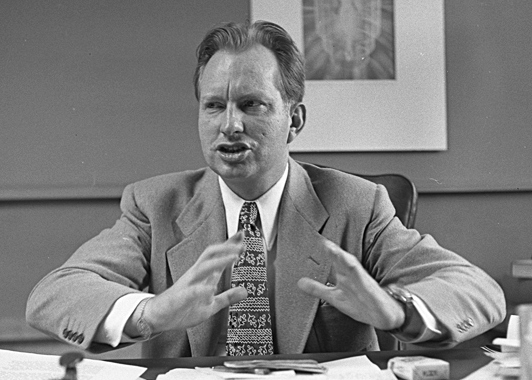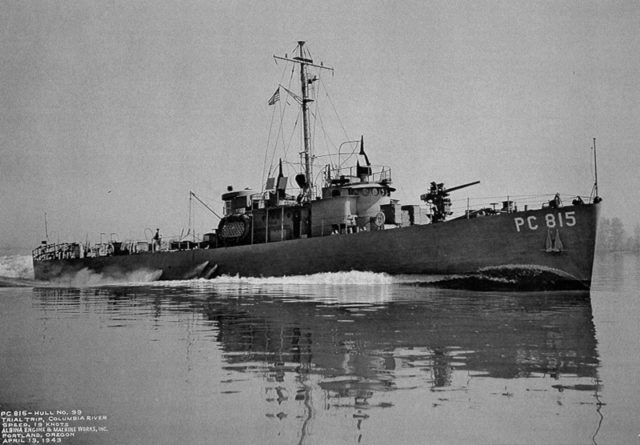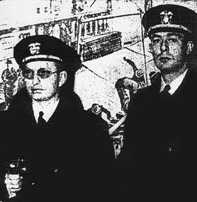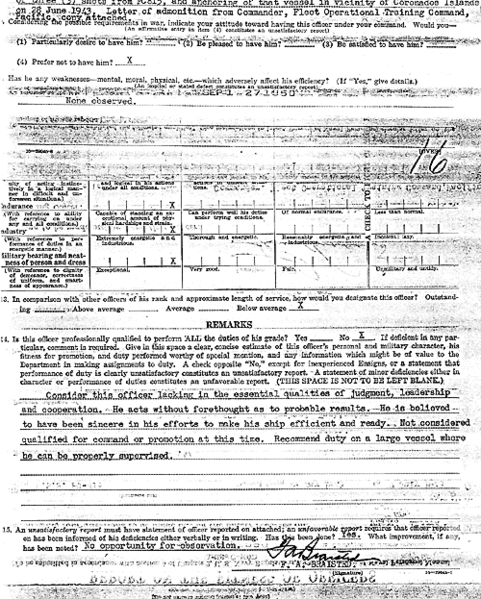Everyone knows that one guy. You know, the one tirelessly convincing an indifferent party audience of his incredible achievements. Incredibly annoying, yet mostly harmless. But send him to war and, boy, could that backfire. If you don’t trust us, ask the US Navy of its days spent with Lieutenant L. Ron Hubbard. You read it right, the father of Scientology.
At the age of 16, Hubbard falsified his age and enlisted in the Montana Army National Guard. Four years later, in 1931, Hubbard received an honorable discharge, along with a footnote – “not to be re-enlisted”. By the end of this story, you won’t wonder why.
Fast-forward to the summer of 1941, when a recruitment officer of the US Navy didn’t take notice of said annotation. Hubbard was once again part of the military. He insisted on becoming an intelligence officer. His training was cut short due to the Japanese attack on Pearl Harbor, and Hubbard was soon after sent to the Pacific.

Not two months into his service in Australia, he was ordered to return to the US. His superior stated in a report that Hubbard was “not satisfactory for independent duty assignment. He is garrulous and tries to give impressions of his importance. He also seems to think he has unusual ability in most lines.”
Back in the States, Hubbard’s new desk job didn’t seem to appease him. And though his request to be assigned to sea duty in the Caribbean was denied, he was indeed sent to Massachusetts where he was given a duty on a yard patrol boat. By October of 1942, Hubbard lost this posting as well. Apparently, he was “not temperamentally fitted for independent command”.
With a note stating that he should be “under the immediate supervision of a more senior officer,” Hubbard was sent to a training facility in Portland. Already in April of 1943, the hero of our story became a commanding officer of a newly manufactured sub-chaser USS PC-815.

It was 19th of May, and the submarine’s sonar picked up what the crew thought was a clear sign of Japanese underwater presence some 10 miles off the coast of Oregon. Hubbard immediately called for backup and started shelling the area.
A total of seven boats, submarines and sub-chasers joined the two and a half days of fierce “battle” against, as it turned out, a well-known magnetic deposit in the ocean.
Hubbard insisted in his eighteen-page report on the event that he “definitely sunk, beyond doubt” at least one Japanese submarine, while critically damaging another one. Neither the subsequent investigation nor the officers from other submarines and boats involved supported his version of events.

Back in his home port of Astoria, Hubbard received a new task. He was to take his sub-chaser on a training exercise to San Diego. Somebody in the Navy hadn’t been paying much attention. The training exercise went well, but Hubbard decided it lasted too short. Thus, he ordered his crew to keep on going.
Unaware of the fact that they had inadvertently trespassed into Mexican territorial waters, he instructed his men to start shooting rounds in the direction of Mexican Coronado Islands. The following day, the US Government received a protest letter from their Mexican allies.
A Board of Investigation was set up, and Hubbard was consequently labeled as “lacking in the essential qualities of judgment, leadership, and cooperation. He acts without forethought as to probable results.” He was finally removed from command.

In 1950, L. Ron Hubbard quit the Navy. Four years later he went on to institutionalize his version of events (and much more), through a new religious organization he formed – the Church of Scientology. The Church maintains that LRH is a decorated war hero who fought in all four main fronts and miraculously recovered from severe wounds inflicted in combat, while the US military is knowingly hiding the truth.
Hubbard still managed to build a uniquely controversial empire and become the author of the single most translated book in the world, The Way to Happiness. In the end, he might have even been grateful to all the senior officers who cut his military career short
